VMware NSX Home Lab Setup
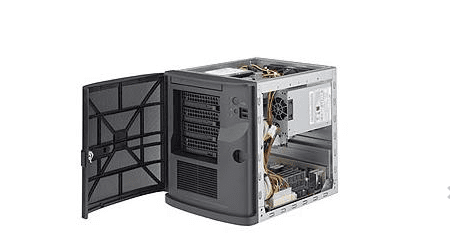
When you work in the virtualization field, networking, or information technology in general, having a home lab can be one of the best investments that you can make in your career and your learning experience. While many are moving towards utilizing cloud resources for labs and such, there is just something that is lost in my opinion by not having your own hardware to get your hands on. Understanding how things go together and understanding how to troubleshoot up the networking stack can provide you with valuable skills in your job and applied to other disciplines. I have been running a VMware home lab now for a few years and it has been a great tool for learning, POC’ing, playing around with technology, and just having fun in general. One of the technologies that I working with and enjoy learning and honing skills is VMware NSX. In this post of a series of forthcoming posts, I am going give you guys an overview of VMware NSX home lab setup and diferent aspects of configuring yourself a learning environment for VMware NSX.
This will consist of my recommendations for:
- Hardware
- Software/licensing
- Installation
Hardware – VMware NSX nested home lab
By far, the easiest and one of the most efficient ways to run your VMware NSX home lab is running nested virtual machines either inside of VMware Workstation or VMware vSphere ESXi on a hypervisor host with nested ESXi hosts.
With nested virtualization, you can essentially build “datacenters” of ESXi hosts inside your host hypervisor. “Nested virtualization” essentially means that you are running a hypervisor inside another hypervisor.
These Supermicro servers have plenty of horsepower to run these types of nested virtualization labs.
The server that is referenced above comes with 64 GB of memory. With previous versions of vSphere ESXi such as 6.7 running VMware NSX 2.4-2.5, the memory here would probably be sufficient to have a nested three host cluster running vSAN along with the NSX Manager and an Edge appliance.
However, with vSphere 7 and NSX-T 3.0, you will want to have more RAM than this. This is why, even though you can use a laptop running VMware Workstation to host nested workloads, the limiting factor there is generally RAM.
As an example of the resources you will need for a VMware NSX home lab setup, you William Lam lists the following as requirements for his vGhetto automated deployed for vSphere 7 including NSX-T 3.0.
Resource Requirements
- Compute
- Ability to provision VMs with up to 8 vCPU
- Ability to provision up to 116-140 GB of memory
- Network
- Single Standard or Distributed Portgroup (Native VLAN) used to deploy all VMs
- 6 x IP Addresses for VCSA, ESXi, NSX-T UA and Edge VM
- 5 x Consecutive IP Addresses for Kubernetes Control Plane VMs
- 1 x IP Address for T0 Static Route
- 32 x IP Addresses (/27) for Egress CIDR range is the minimum (must not overlap with Ingress CIDR)
- 32 x IP Addresses (/27) for Ingress CIDR range is the minimum (must not overlap with Egress CIDR)
- All IP Addresses should be able to communicate with each other
- Single Standard or Distributed Portgroup (Native VLAN) used to deploy all VMs
- Storage
- Ability to provision up to 1TB of storage
Check out my write up on building a Supermicro VMware home lab here where I detail the servers I use and reasons:
Software – VMUG Licensing
There is really not a better deal out there than you will find with VMUG Advantage EvalExperience. With the EvalExperience component of the VMUG Advantage subscription for a mere $200 (less if you catch it at the right time as they typically run 10% off coupons often), you can have access to most of the catalog of VMware products, including the recently added NSX-T 3.0! It is an amazing value and one that if you are serious about learning at home, you just can’t beat it.
With the VMUG licensing, you will have access to all the software and licensing components you will need for your VMware NSX home lab with the exception of Windows licensing if you want to have something other than evaluation licensing there.
VMware NSX Home Lab Installation
Ok, now you have hardware and software. What about the installation and configuration of your VMware NSX home lab? Well, there are a couple of great resources out there that I highly recommend.
The first resource – VMware how to build a nested NSX-T 2.3 lab is a guide that VMware released that will step you through building your NSX-T home lab and gives you the guidance on how to set this up. This includes how to install your hosts, configure your networking, setup transport zones, deploy edge appliances, and much more.
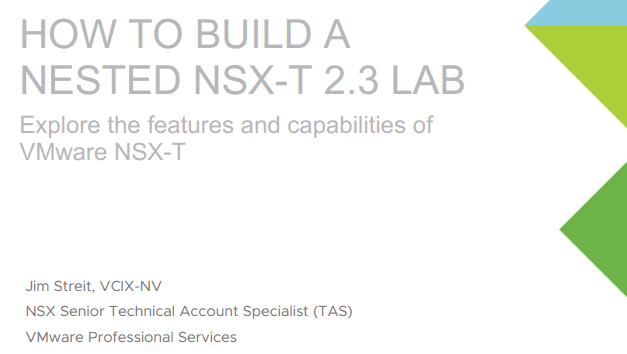
If you want to get into the nuts and bolts of the deployment and really see how to fit the pieces together and how they work the way they do, this is a great place to start. Working through the lab guide will help you wrap your head around many of the NSX-T concepts and workflows.
What though if you are looking to just get the lab built and have your hosts deployed and ready to go so you can start playing around with the cool NSX-T functionality including distributed firewalling, IDS, and other things?
William Lam’s vGhetto Automated vSphere with Kubernetes Lab Deployment is definitely a great resource! William has over the years provided many great tools and utilities including his automated nested lab deployment scripts.
With the current version of the script, you will be able to fully deploy a vSphere 7 lab with Kubernetes and NSX-T 3.0 without any input from you other than customizing the script file in the beginning to fit your environment.
Additionally, in the directions given in the Github download of the vGhetto script, you can customize the script to deploy only vSphere 7 and no Kubernetes or NSX-T, or you can have it deploy vSphere 7 with NSX-T and no Kubernetes. So, you can customize the script for resource availability.
For a strictly VMware NSX home lab, you can opt out of deploying Kubernetes which will reduce the resource requirements considerably.
Concluding Thoughts
If you are interested in VMware NSX home lab setup and what would be required for you to have an environment at home for learning and playing around with VMware NSX-T, hopefully this post with a few of my thoughts around hardware, software/licensing, and installation will help fill in a few gaps of what you need and how to go about it.
Check out Supermicro VMware home lab to see which servers I am using and the reasons, configurations, etc.


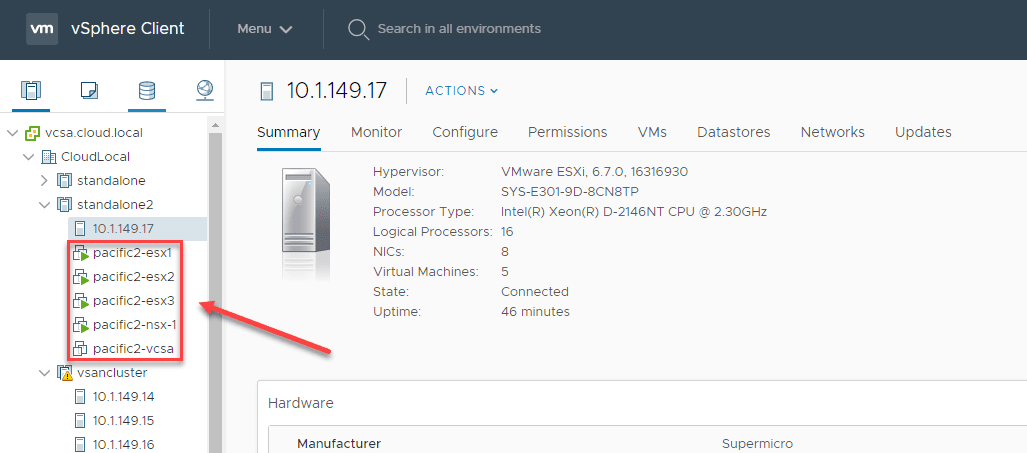
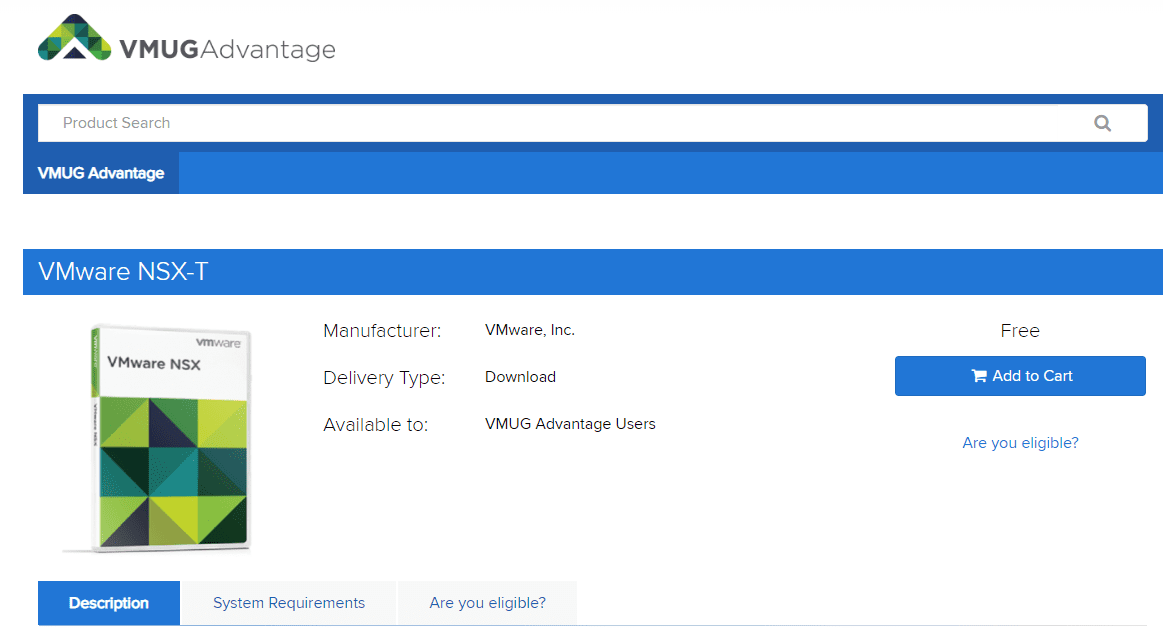



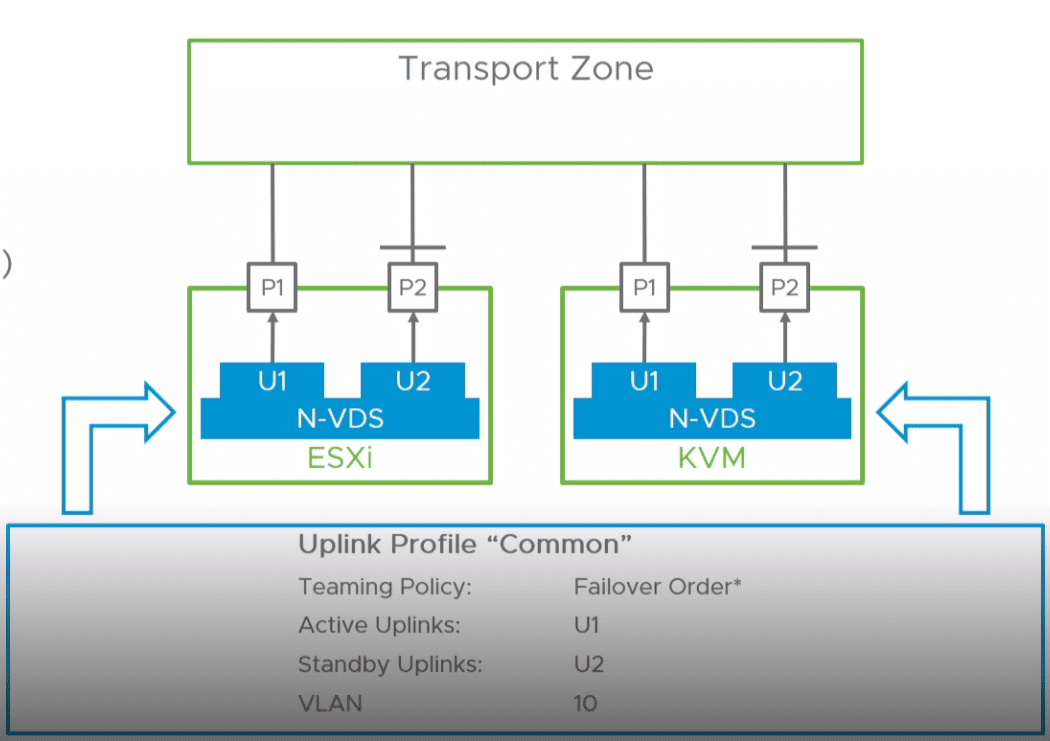
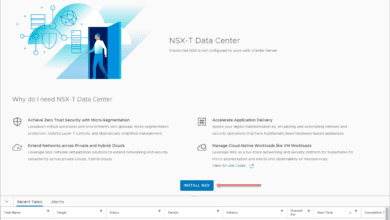
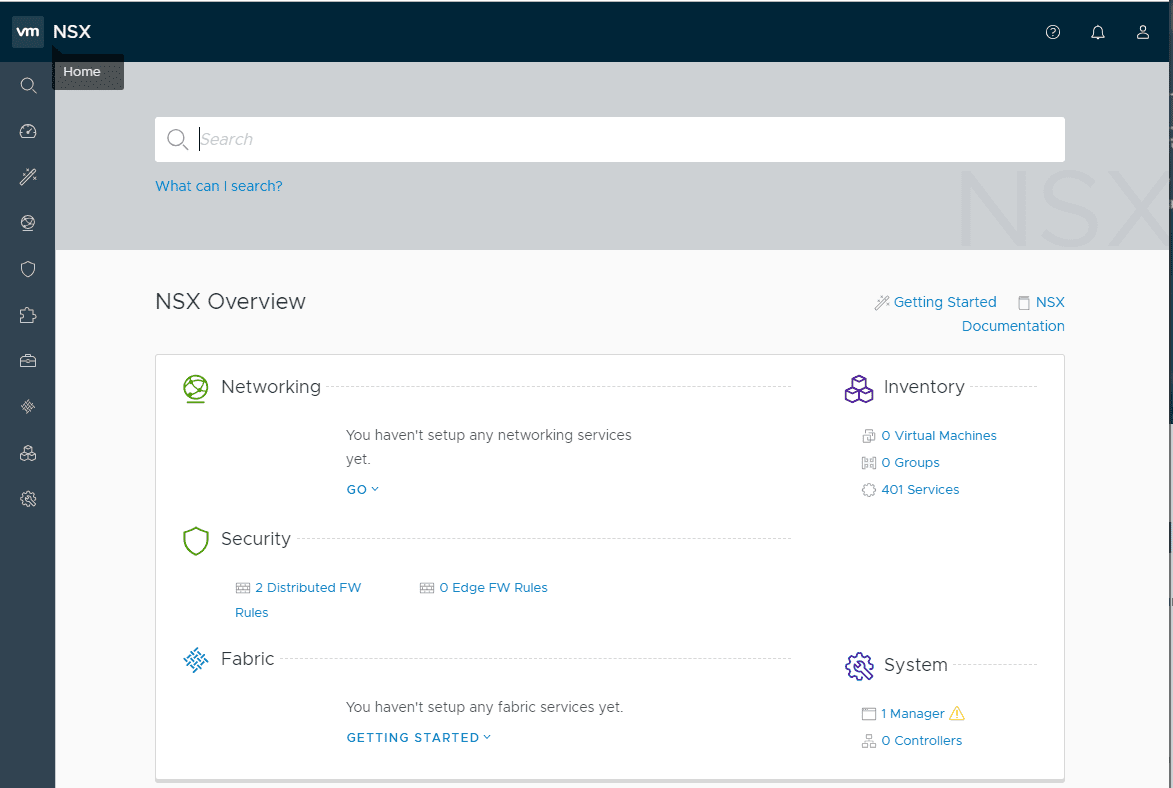
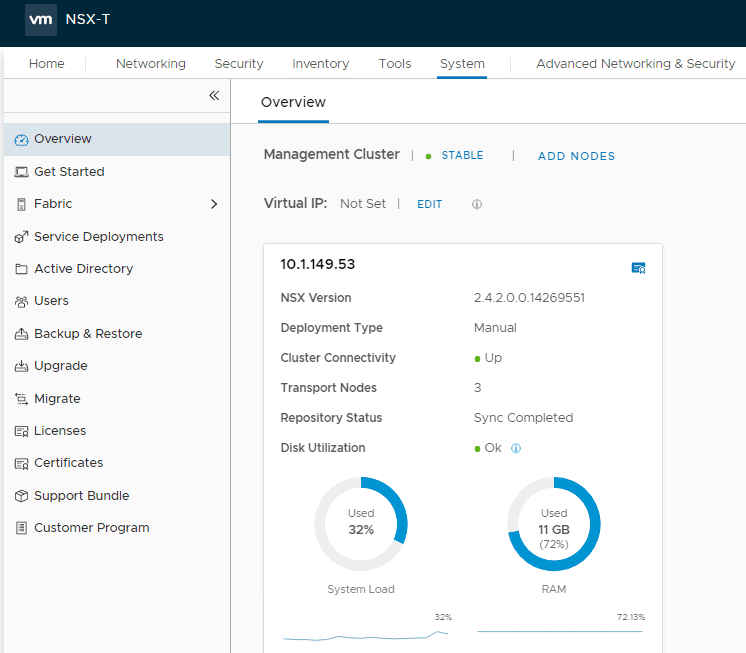





Please, correct me if I’m wrong but VMUG only gives you 1 license of each products. Could you use your subscription to create that many nodes on that single license?